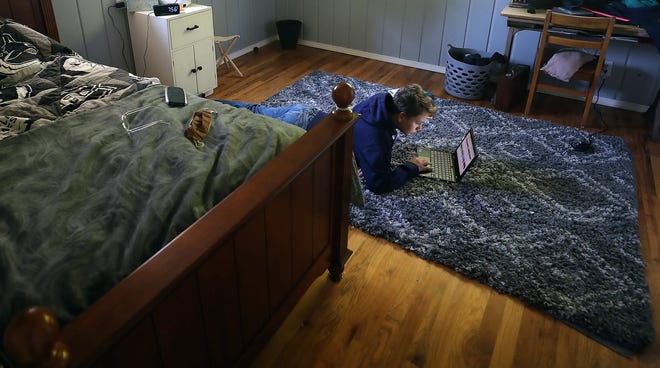7.8.21 – Ledyard King and Mike Stucka USA TODAY NETWORK
In Louisiana, 14% of residents don’t have adequate broadband infrastructure and 60% live in areas that have only one internet provider, according to the White House. Locally, on the FCC and Microsoft measures: In Terrebonne Parish, 100% of households could get broadband but 35% actually had it.
As federal officials debate pouring billions of dollars into broadband access, data suggests many of Louisiana’s schoolchildren and adults who preferred to work from home spent the pandemic with sub-par access to high-speed internet, particularly in the state’s least-wealthy parishes.
Advocates say that “digital divide” across the United States is due largely to two factors: a lack of internet infrastructure in the country’s rural reaches and the relatively high cost of broadband that has made the service unaffordable for many in urban centers.

In about half of Louisiana’s parishes — 33 of 64 — measured by a Federal Communications Commission study, broadband access is available to at least 72% of residents. Yet in about half of the state measured by Microsoft — 33 of 64 parishes — no more than 17% of households actually have high-speed access, a USA TODAY analysis shows.
President Joe Biden and a bipartisan group of Senate moderates have reached a deal on a far-reaching infrastructure plan that would direct $65 billion to increase broadband connectivity from coast-to-coast. Despite the agreement, it’s unclear whether it would address the solutions some lawmakers want to see such as continued broadband subsidies for low-income families, greater competition among wireless providers and continued buildout of high-speed networks in poorer, rural areas.
The Biden administration estimates 30 million Americans live in areas that lack broadband infrastructure to provide minimally acceptable speeds.
>> READ MORE: United States lags in broadband access, but will billions of dollars fix it?
In Louisiana, 14% of residents don’t have adequate broadband infrastructure and 60% live in areas that have only one internet provider, according to the White House.
Locally, on the FCC and Microsoft measures: In Terrebonne Parish, 100% of households could get broadband but 35% actually had it.
The proportions of Louisiana households that have high speed access varies widely: In Catahoula Parish, it’s just 2%; in Jackson Parish, it’s 2%; and in Red River Parish, it’s 3%. Leading the state are St. Tammany Parish with 60%, Lafayette Parish with 52% and Ascension Parish with 52%.Your stories live here.Fuel your hometown passion and plug into the stories that define it.Create Account
A USA TODAY analysis of data nationwide found a wide gap between rich and poor parishes, as measured by median household income. The chasm varies depending on state and county.
Among Louisiana’s wealthiest parishes: 52% of Ascension Parish has access, 60% of St. Tammany Parish has access and 39% of St. Charles Parish has access. Among the least-wealthiest parishes, access rates are 10% in East Carroll Parish, 3% in Tensas Parish and 6% in Claiborne Parish.https://www.usatodaynetworkservice.com/tangstatic/html/ncou/sf-q1a2z3be0d353f.min.html
>> Interactive Map: See how broadband access compares across the U.S.
Among the state’s most populated parishes: Some 42% of East Baton Rouge Parish households have broadband access, as well as 38% of Jefferson Parish households and 34% of Orleans Parish households, the Microsoft data shows.
The complete USA TODAY story on national broadband is available on usatoday.com.
Erin Mansfield and Matt Wynn contributed to this report. The USA TODAY Network is publishing localized versions of this story on its news sites across the country, generated with data from Microsoft, the Federal Communications Commission and the White House.
